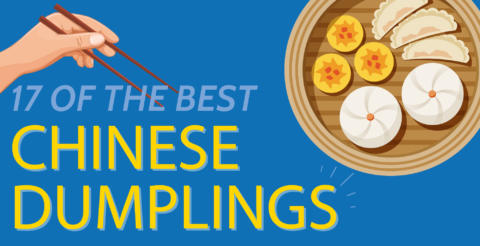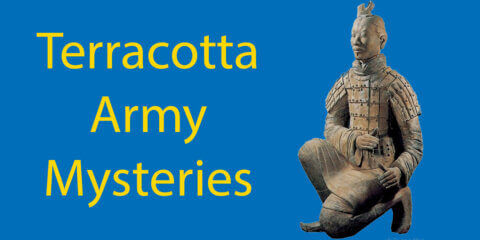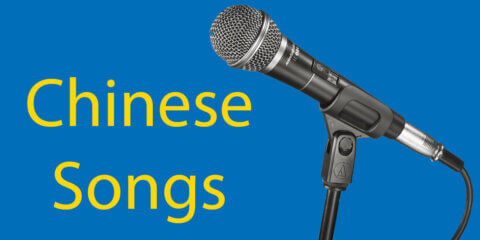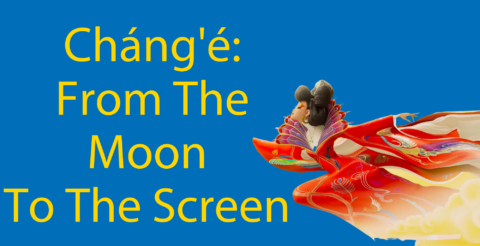The Ultimate Guide to Playing Chinese Chess || Game Set-Up, Piece Movements PLUS Opening Moves
Want to give your inner strategist a new challenge? You’re in the right place.
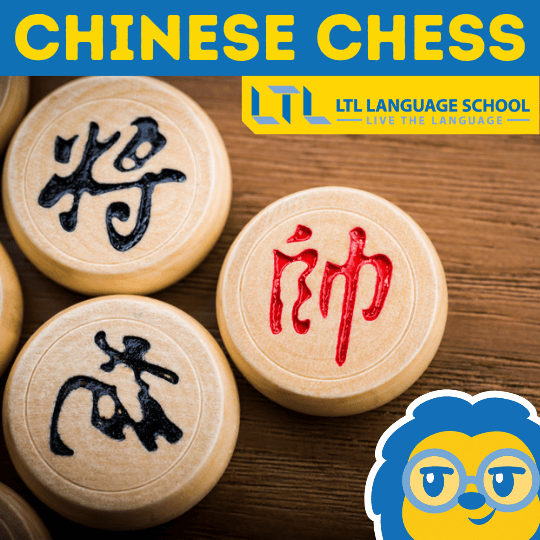
Chinese chess, also known as Xiangqi (象棋), is a thrilling game that has been captivating minds for centuries and is guaranteed to put your wit, foresight, and cunning to the test.
With a general, his advisors, elephants and cannons to account for, maneuvering across the Chinese chessboard can be pretty tricky stuff.
But don’t worry – whether you’re a seasoned chess player looking for a new battleground or a curious novice eager to dive into something extraordinary, this beginner’s guide to Chinese chess will tell you everything you need to know to get started.
Chinese Chess || A Brief History
Chinese Chess || Similarities and Differences with Western Chess
Chinese Chess || Game Set-Up
Chinese Chess || Aim of the Game
Chinese Chess || Piece Movements
Chinese Chess || Common Opening Moves
Chinese Chess || The Flying General
Chinese Chess || Bonus Resources
Chinese Chess || FAQs
Chinese Chess || A Brief History
You may be surprised to learn that the origins of Chinese Chess are actually not in China at all.
Rather, they are in India.
The game of Chaturanga dates back at least 1,500 years and is widely believed to have given way to both Western and Chinese chess.
As you might imagine, Chaturanga is somewhere between the two in its appearance and pieces.
Interestingly, however, historians believe that in the original game, check and checkmate did not exist.
Instead, one could achieve victory either through capturing the king or baring the enemy king by capturing every other piece on the board.
Chess is believed to have migrated to China during the Tang Dynasty (around 700AD) and have evolved into its modern form at some point in the Song Dynasty (around 1200 AD).
Want to learn more about Chinese dynasties? We have a Beginner’s Guide for that too!
Since that time, Xiangqi continued to grow in popularity and is now a much-loved pastime for tens of millions of people in mainland China, Taiwan and across Asia.
Chinese Chess || Similarities and Differences with Western Chess
Whilst the two games certainly share some common ground, there’s a few key differences.
Let’s take a closer look:
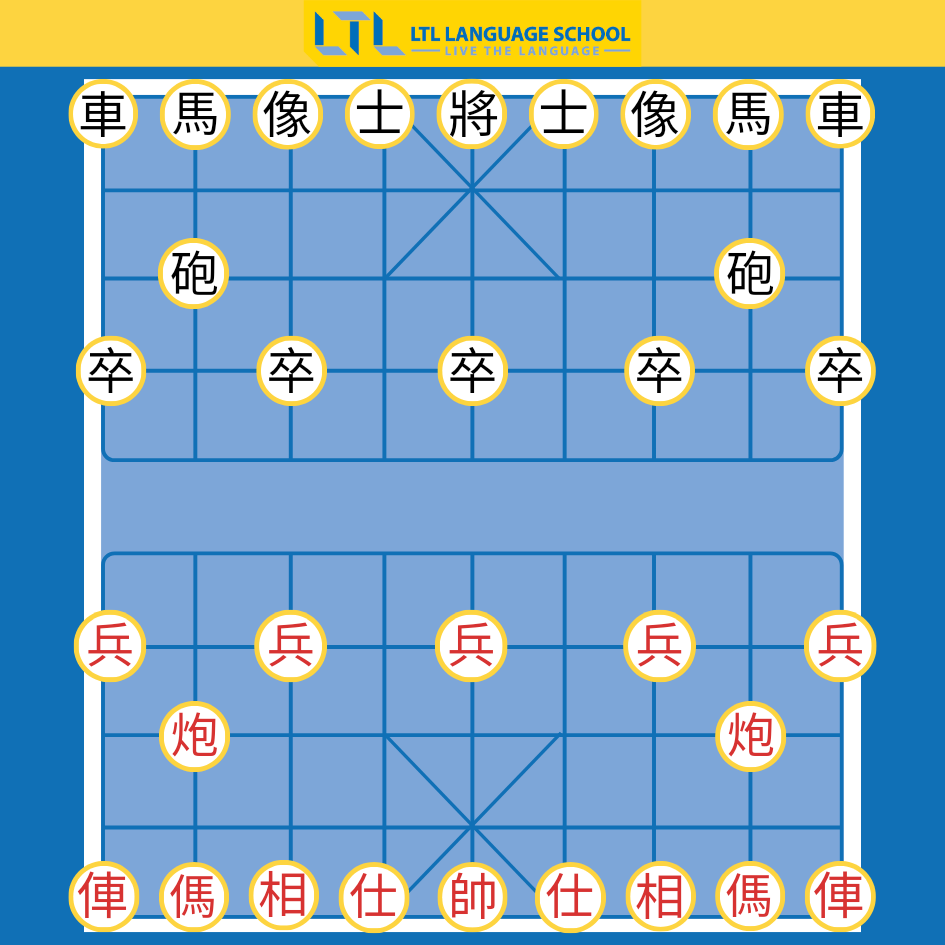
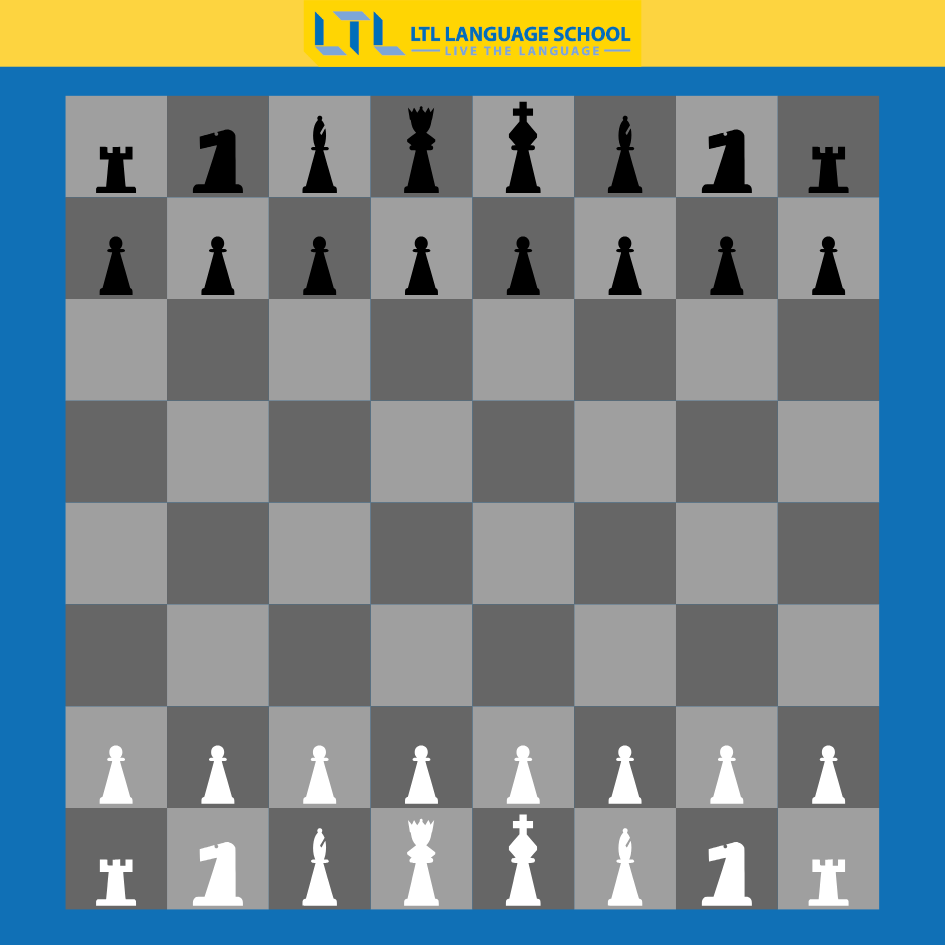
The Board
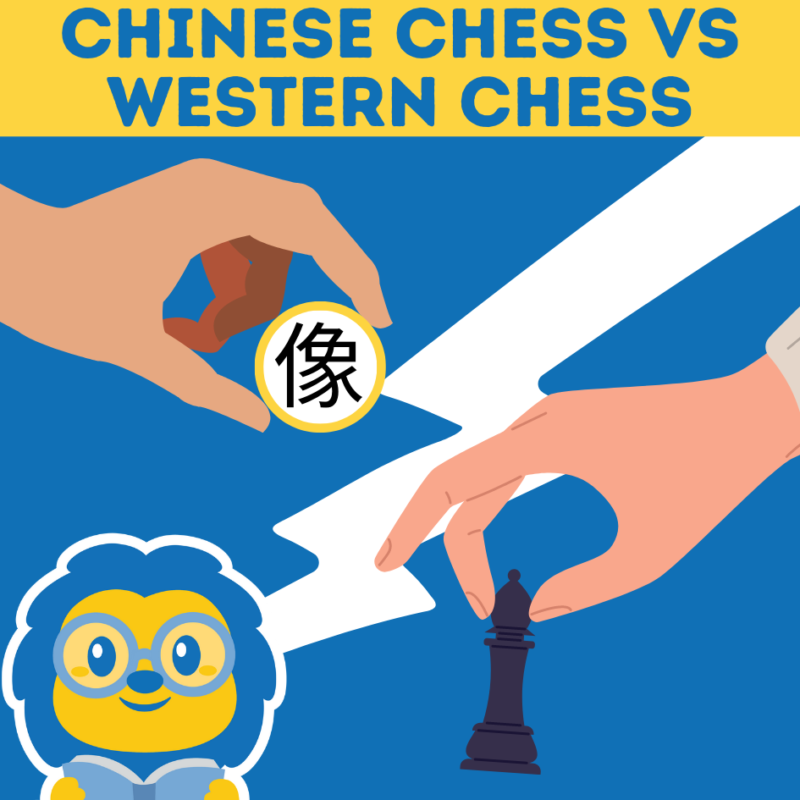
The battleground in both games is a grid.
Both include two players starting from either end of the board and include attacking the opponent on the opposite side.
The size, however, differs.
In Chinese Chess, the pieces sit at the crosspoints of the lines, rather than in the squares (as with Western Chess).
DID YOU KNOW || There are 72 crossing points in Xiangqi, as opposed to 64 squares in Western chess.
It’s Not All Black and White
In Western chess, the two sides are black and white, whilst in Chinese chess, the two sides are black and red.
In both versions, black is second to move.
Commander in Chief
In Chinese chess, this is the general. The red general is General 帥 (Shuài) and for the black side it’s General 將 (Jiàng).
In Western chess, the king calls the shots. He’s also slightly more powerful than the Xiangqi generals, as he can roam freely over the board, whilst the poor generals are confined to the measly nine points of the palace – but more on that later.
The Queen is the Most Powerful Piece… Right?
In Western chess, absolutely, she’s the MVP. In Chinese chess, there’s actually no queen (or even queen-equivalent) at all!
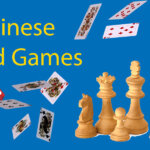
LTL’s Ultimate Guide to Chinese Board Games PLUS How to Learn Chinese Using Them
Have you ever considered a few humble board games in China to learn Chinese? Do you want to know the most popular Chinese board games?
Piece Types and Numbers
In each game, both sides begin with 16 pieces under their command. However, there are some pretty major differences between the two sides.
Whilst Chinese chess is missing a queen, they more than make up for it with advisors, elephants and (my personal favourite) cannons.
Fun Fact || 象棋 (Xiàngqí) literally translates to ‘elephant chess’
Western and Chinese chess have the rook and chariot respectively, which move and attack in the same way. Another similar, but not identical pair of pieces, are the knight and horse.
The knight can famously jump over other pieces to get where he needs to go. The humble horse unfortunately lacks this level of athleticism and can be easily blocked in Chinese chess if a piece is beside it.
Pawns Vs Soldiers
There’s a fair bit to say about these often under-appreciated pieces, so they’re getting their own section!
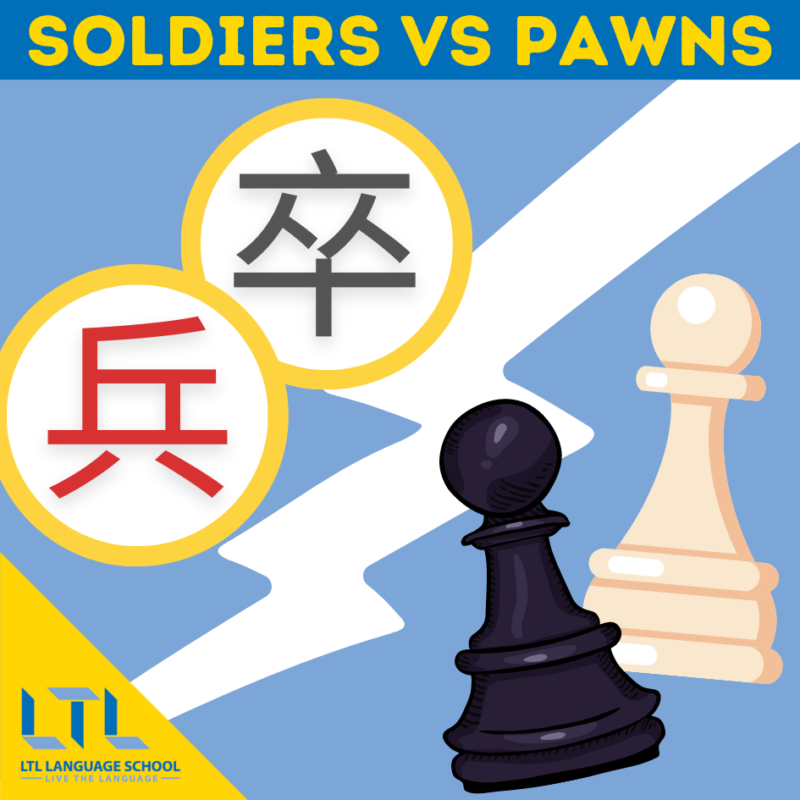
The underlying concept is similar for both pawns and soldiers. They are arranged in a line at the front and take small steps forward. In both games, the pawns and soldiers are not allowed to retreat.
However, whilst Western chess pawns attack diagonally (with the slight exception of an En Passant situation), Xiangqi soldiers capture other pieces by moving one space forward.
Additionally, once soldiers cross the river (see below👇) they are also able to move and attack one space horizontally.
Critically, pawn promotion doesn’t exist in Chinese chess. So once your soldier makes it across enemy lines, don’t expect an upgrade to an extra cannon or chariot!
Ain’t No Mountain High Enough, Ain’t No River Wide Enough…
Well, there is in Chinese chess!
The river, horizontally dividing the two sides in the middle of the board and known as 楚河 (Chǔ Hé, Chu River), is actually pretty influential.
For instance, elephants are totally unable to cross the river and the movements of soldiers change significantly once they cross it.
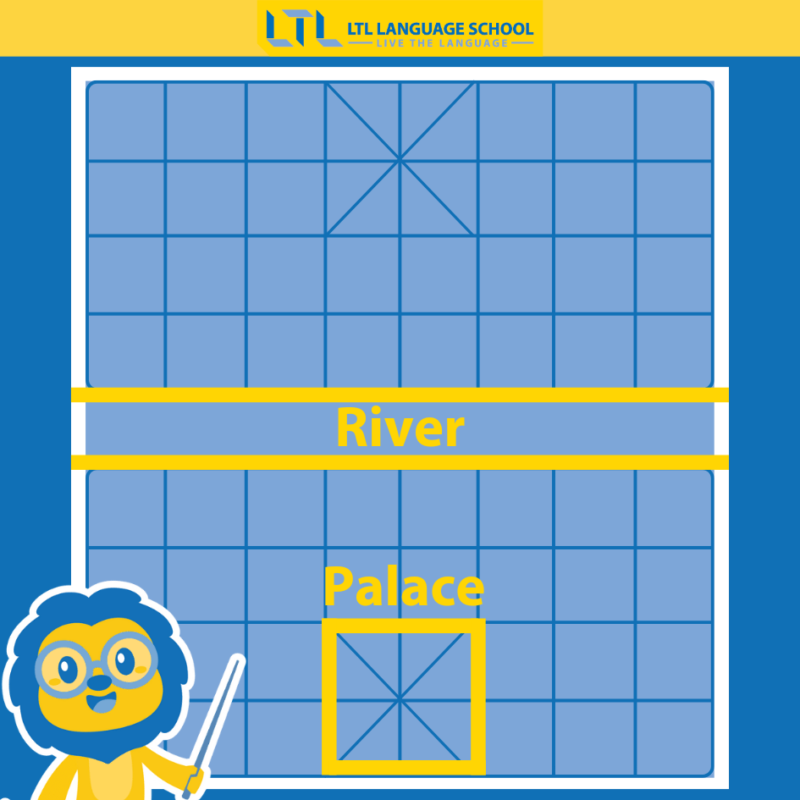
FUN FACT || On many boards, you’ll not only find 楚河 (Chǔ Hé, Chu River) inscribed along the river, but also 漢界 Hàn Jiè (汉界 in simplified). 漢界 means Han border and is a reference to the Chu-Han Contention that occured around 200BC.

Qin Shi Huang and the Terracotta Army: 4 Unanswered Questions
The discovery of the Terracotta Warriors brought up as many questions as answers. We take a look at some of the strange and grisly mysteries.
Chinese Chess || Game Set-Up
Each player’s pieces are arranged symmetrically on their side of the board.On the each player’s side, there are nine points, known as “the palace,” which is distinguishable by the diagonal lines forming an ‘X’ shape.
The starting positions of each of the pieces can be seen in the picture below (remember to put the pieces on the line intersections and not in the squares!)
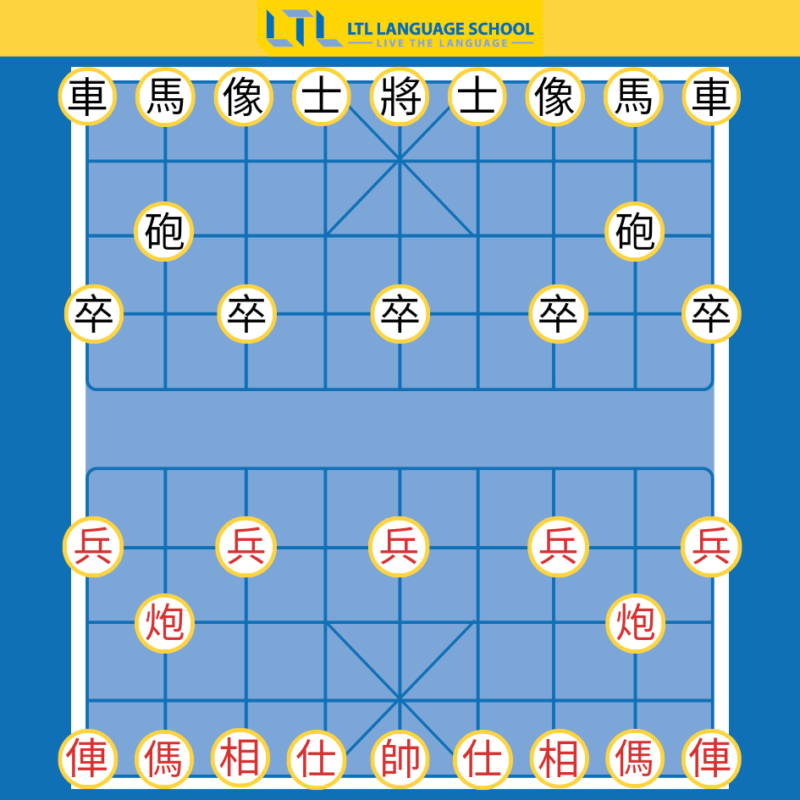
Chinese Chess || Aim of the Game
The aim of the game is pretty simple: capture the general.
As with the king in Western chess, the general is the most important piece on the board and victory is achieved when there is no way of blocking or evading an attack by the enemy side.
This endpoint is known as checkmate.
Here’s a couple of examples to show you what checkmate could look like:
Checkmate Example 1: Horse and Chariots
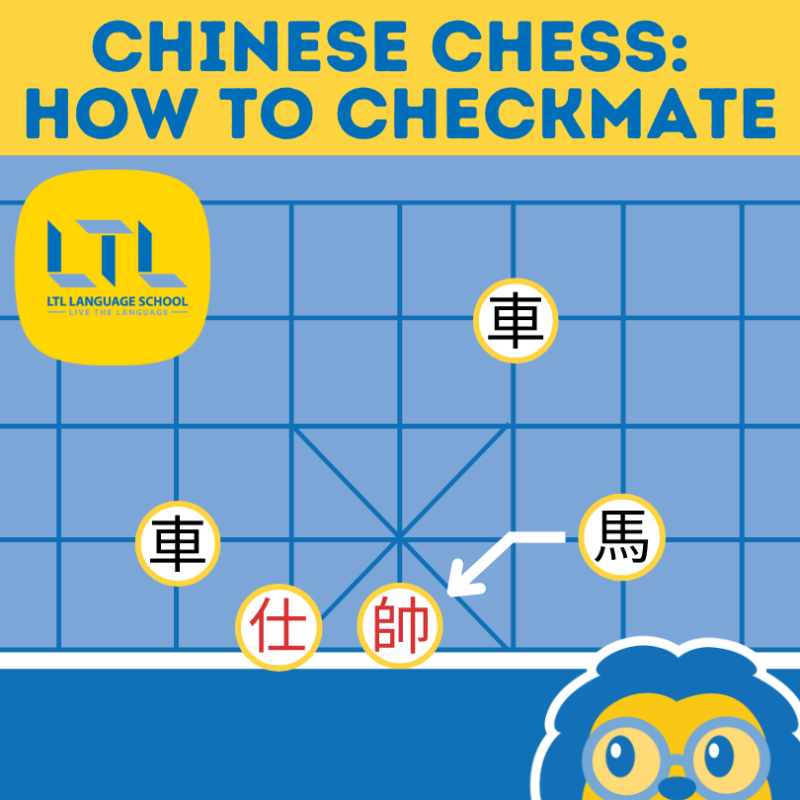
There’s no way out for this general!
Currently under direct attack from the horse, he cannot move one space forward or right as this would put him in the line of fire from one of the enemy chariots.
The advisor is also unable to block the attack from the horse, so it’s checkmate in this game.
Checkmate Example 2: Cannons
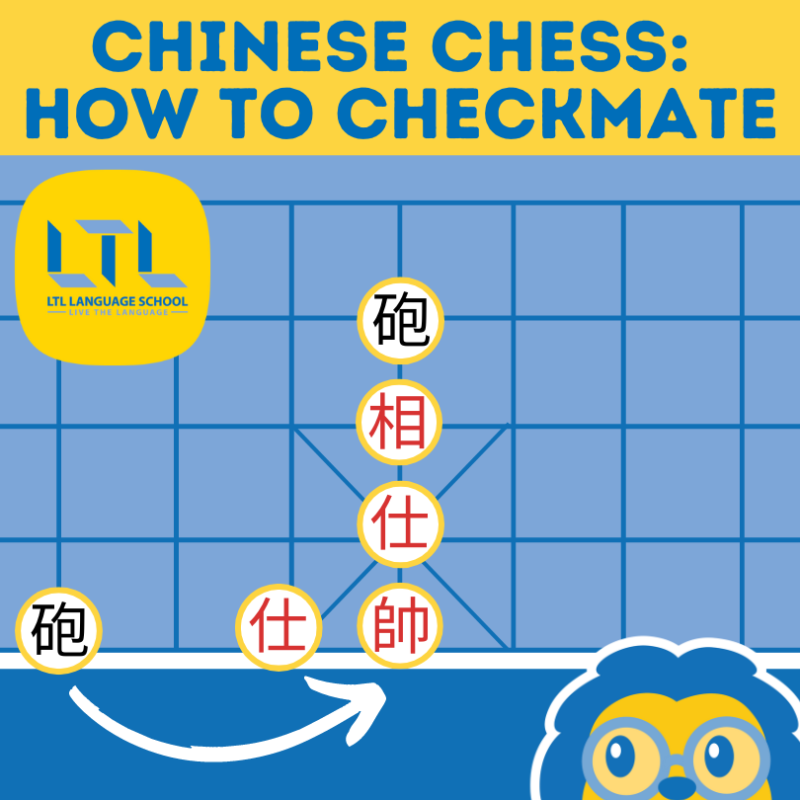
In this scenario, the general has been checkmated by the use of both cannons.
The red elephant is unable to block the current attack as it would result in the general being placed in check by the cannon above.
A strong lesson in why you should pay attention to those cannons!
Stalemate?
In Chinese chess, stalemate is not a draw.
If a player is in stalemate (meaning he or she has not legal moves to make), they lose the game.
BONUS CONTENT || Check out our guide to our favourite Chinese board games here.
Chinese Chess || Piece Movements
There are 16 pieces under your command in a game of Xiangqi and an almost infinite number of game possibilities.
Understanding the movements of each piece allow for you to not only plan a strong offence and defence, but also to anticipate a potential plan of attack from your opponent.
Additionally, a solid grasp of all the pieces’ abilities will help you strategise a strong opening and lethal endgame, meaning you can capture the king with greater efficiency.
So, how about we get acquainted with the generals and their armies:
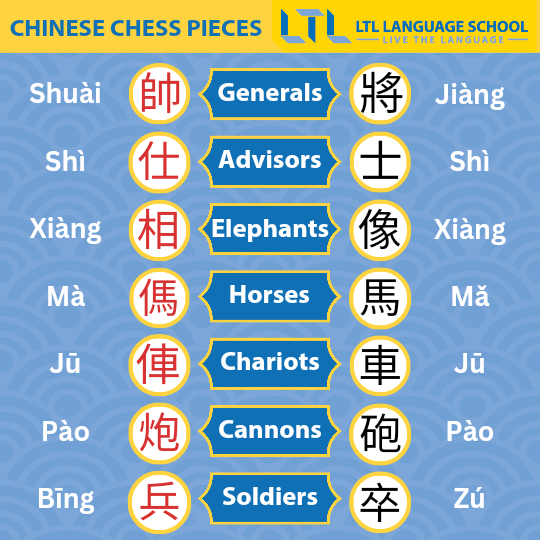
The General
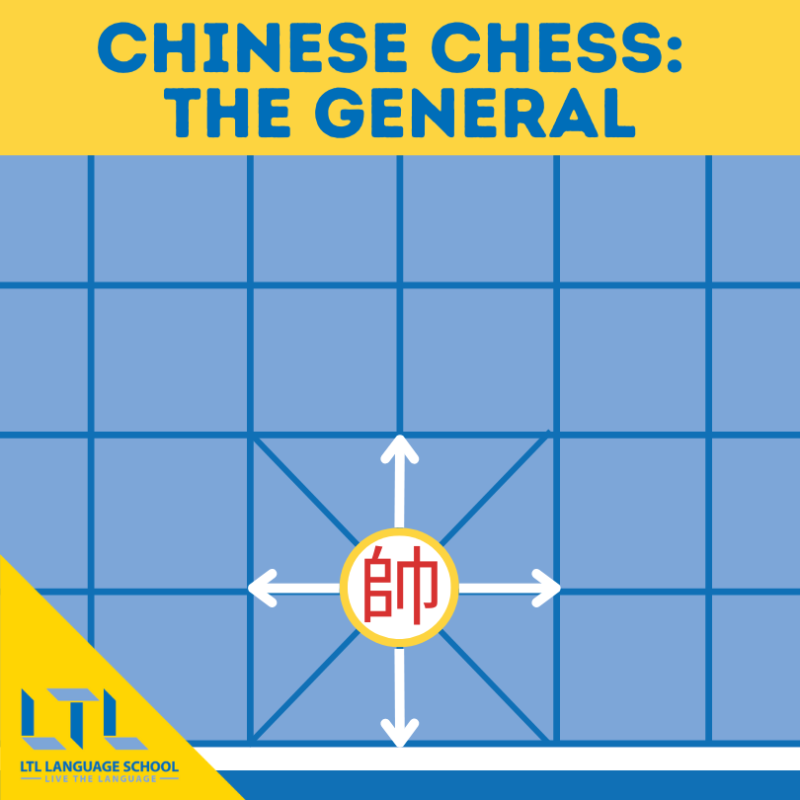
The general is a man adjusted to luxury, thank you very much.
As such, he can only stay within the 9 points of the palace (the area indicated by the diagonally crossed lines).
Similarly to Western chess, the general can only move one space at a time and cannot move diagonally.
The Advisors
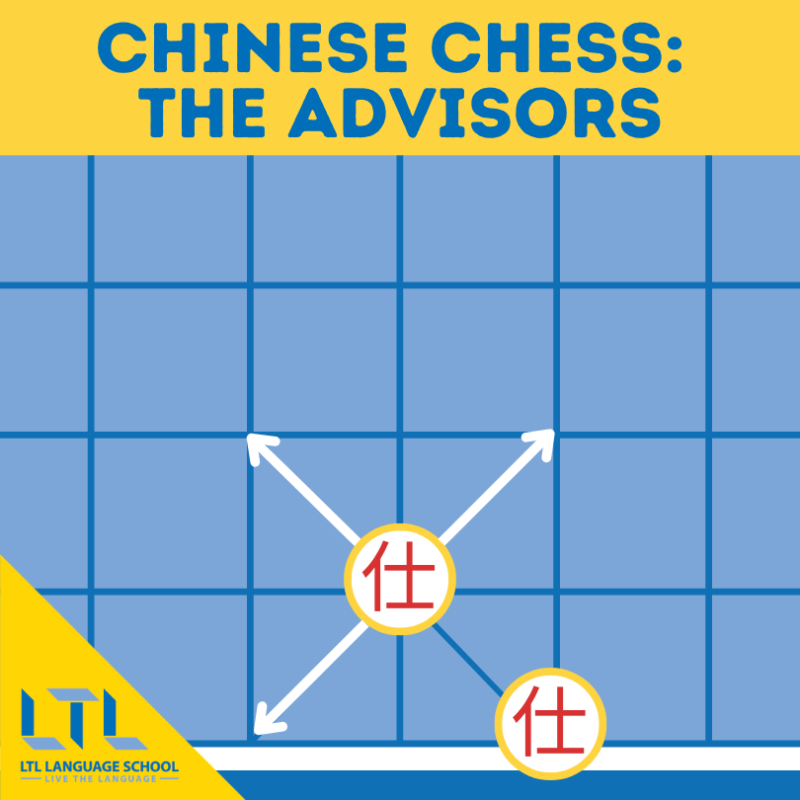
Where would any self-respecting general be without his trusty advisors?
These defensive pieces are located either side of the general and can move one space diagonally.
This loyal duo also cannot leave the palace, so they are limited to 5 points on the board.
The Elephants
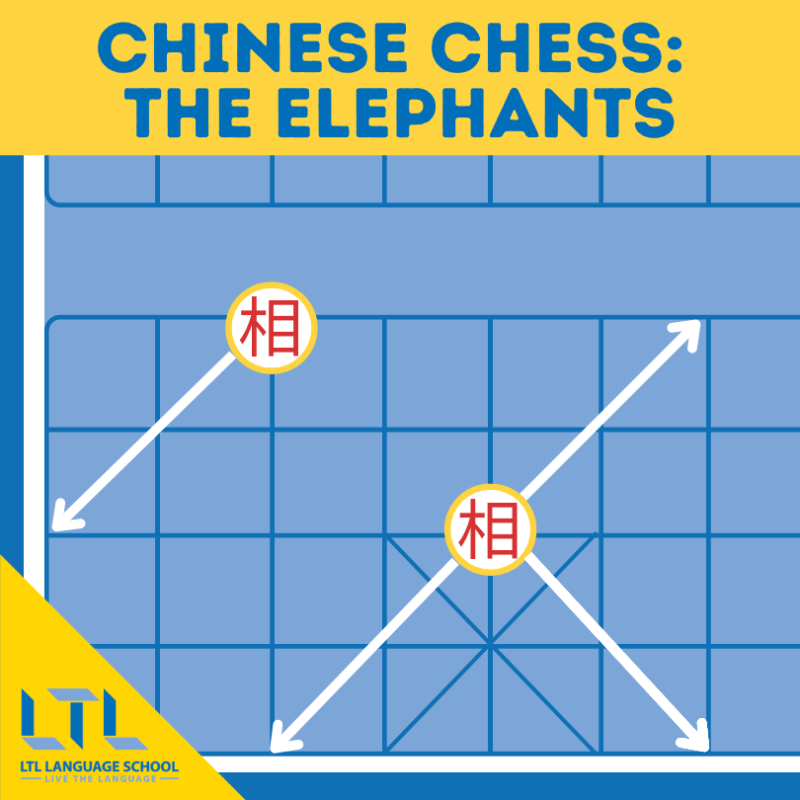
The elephants, somewhat similarly to bishops in Western chess, move diagonally.
However, the elephants can only move two spaces at a time and forget whatever you’ve seen on National Geographic, these elephants can’t swim – so no crossing the river!
They also cannot jump over pieces in their way, so make sure to keep their paths open.
Lots of people like to grumble that these pieces are “irrelephant“, but when used correctly, these elephants can be an incredibly useful asset!
The Horses
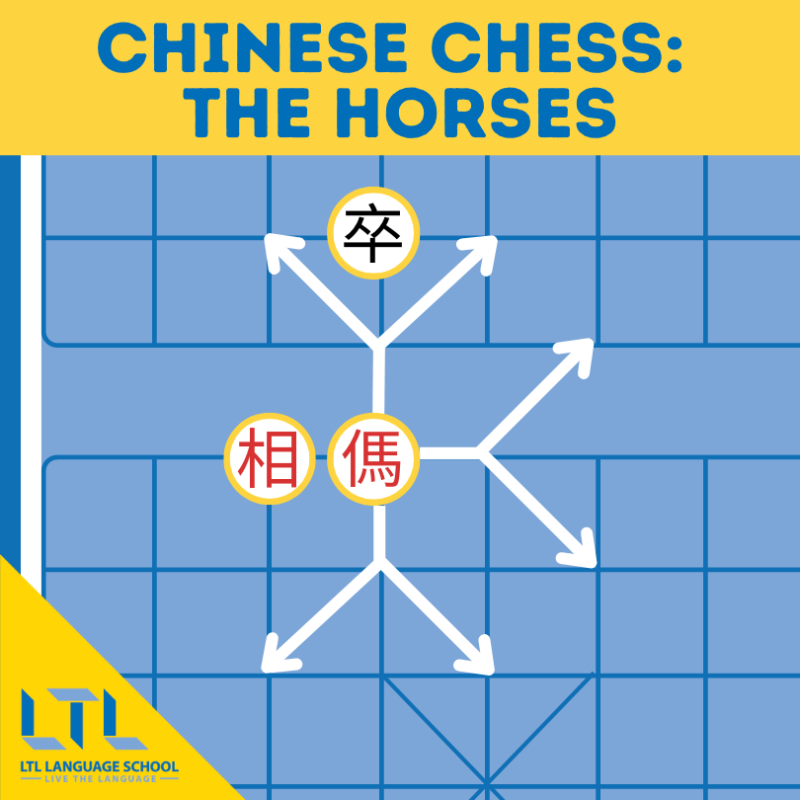
A close cousin of the knights in Western chess, horses in Chinese chess also don’t move in a straight line.
Horses must first move one space horizontally and then one space diagonally.
This means they can be easily blocked by other pieces beside them.
Whilst horses can cross the river, they cannot jump over other pieces like knights can.
The Chariots
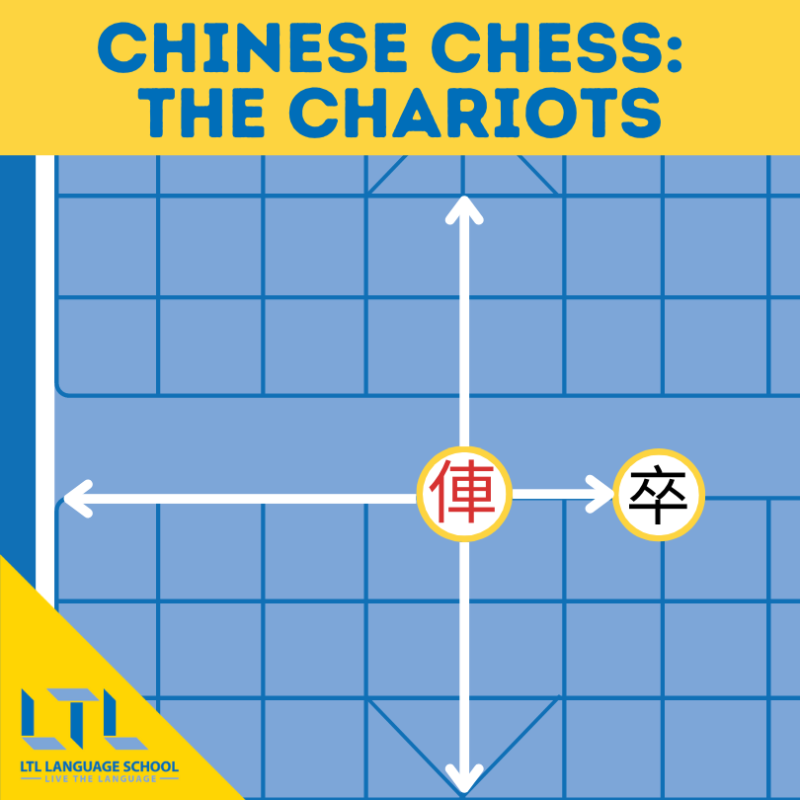
The chariots are the most powerful pieces in Chinese chess, so don’t sacrifice them too quickly!
This powerful pair can travel horizontally or vertically across the board for as far as there are open spaces, just like rooks in Western chess.
Also just like rooks, the chariots cannot jump over pieces that are in their way.
FUN FACT || Chinese chess uses chariots rather than castles because in ancient times, the strength of a kingdom was based on the number of chariots it had.
The Cannons
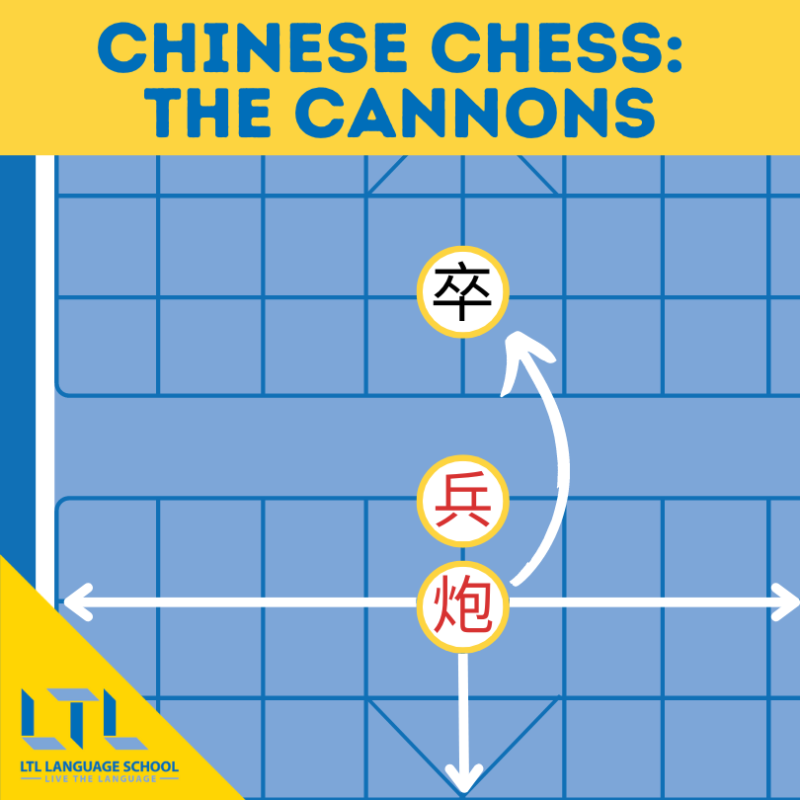
Whilst cannons move like chariots (horizontally and vertically), their method of attack is extremely unique!
Cannons cannot directly capture enemy pieces. Instead, they must ‘jump over’ another piece.
This other piece can be from either side, but it must only be one. Cannons can’t jump over two or more pieces at a time.
The Soldiers
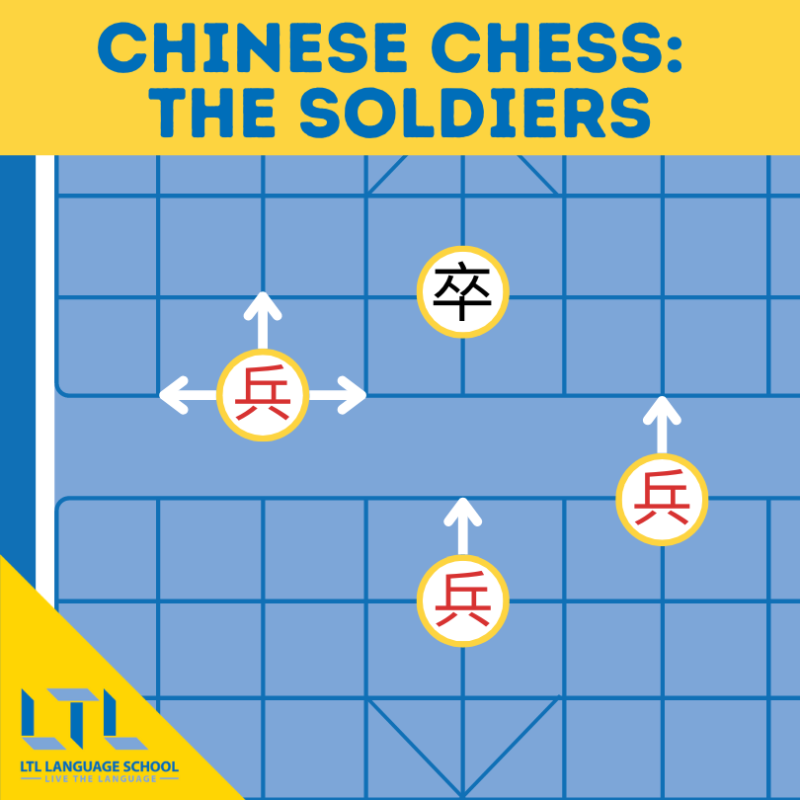
Don’t be fooled, these soldiers are not the pawns you may be used to from Western chess.
They follow a unique set of rules.
Whilst on home turf, soldiers can only move (and capture pieces) one space forward.
However, once they have crossed the river, soldiers can also move one space sideways.
But don’t be too quick to move them too far forwards, as soldiers can never move backwards. No retreating for these troops!
They also cannot be ‘promoted‘ like pawns in Western chess. So again, choose their paths wisely.

How To Memorize Chinese Characters // 8 Tips For Success
Learning Chinese is intimidating for many, but it’s not as bad as you think. We are going to reveal the top tips on how to memorize Chinese characters.
Chinese Chess || Common Opening Moves
During the opening phase of Chinese chess, there are some common principles to obide by.
These include, but are not limited to, controlling the center of the board, developing key pieces (the cannon, horse and chariot) into strong offensive or defensive positions and not isolating any pieces (for instance, crossing the river without support).
It’s also worth noting that openings in Chinese chess rely a lot less on soldier making space for them (although ‘freeing the horses‘ by moving the appropriate soldiers forward is a popular tactic).
However, as this is a beginner’s guide, we felt it was best to provide you with a couple of opening moves you could try in your games of Chinese chess!
So, get your pen and paper ready…
Central Cannon
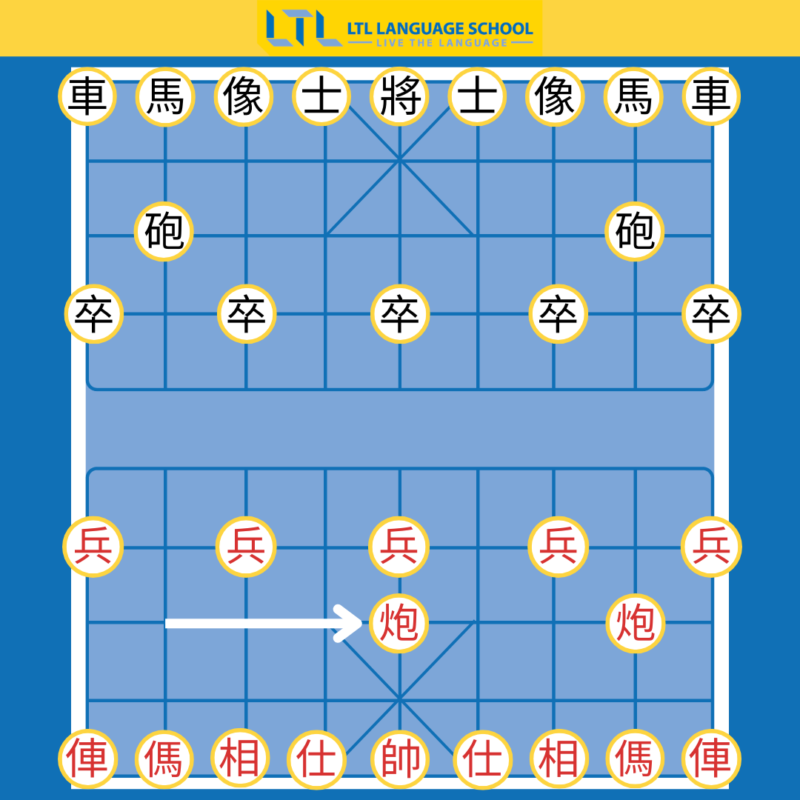
This opening is so common that almost half of all games start this way!
It’s an ideal opening move for beginner’s and can be completed with either the left or right cannon.
It immediately puts black under pressure by threatening the central soldier.
Flying Elephant
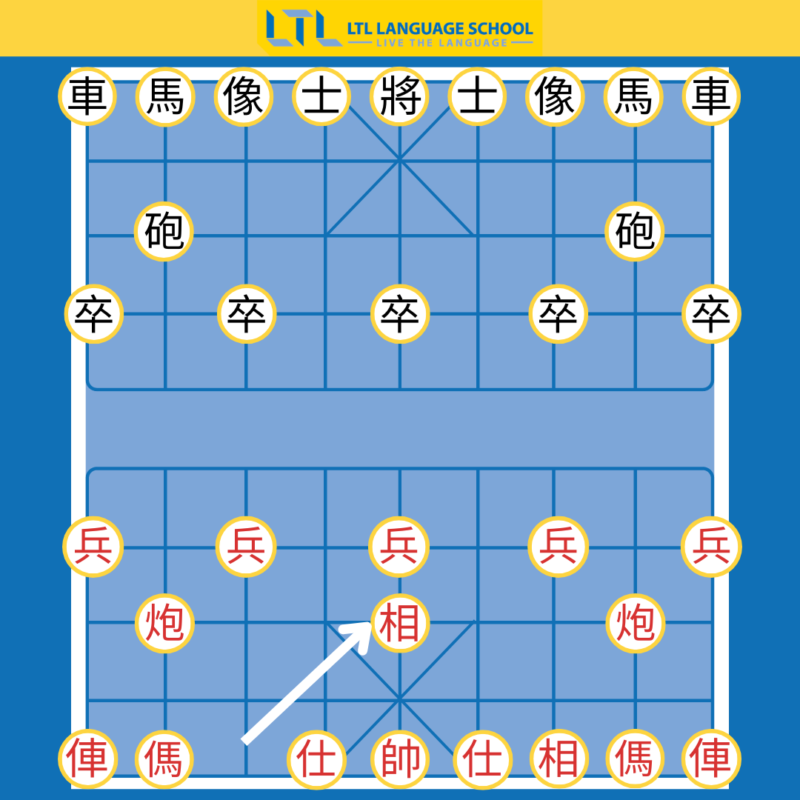
Whilst these elephants can’t swim, they can certainly fly in the opening!
This move can be completed again either by the left or right elephant and is considered to be a defensive opening.
A strong advantage with this opening is that it immediately links the cannons.
Three-Step Tiger
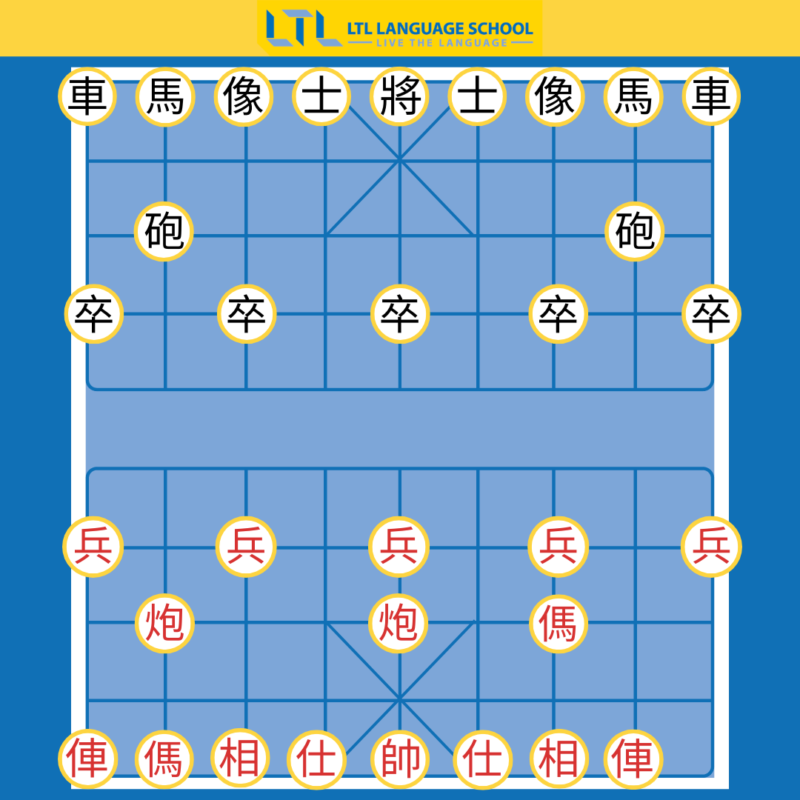
This one is ever so slightly more complex, but it’s well worth remembering!
Here, we’ve adopted the central cannon opening and have then moved the right horse forwards and right chariot sideways.
This is an ideal opening to adopt as three key pieces have been immediately developed.
It’s also considered very aggressive, so choose this sequence to have your opponent shaking from the start!
Chinese Chess || The Flying General
Remember how the general is never allowed to leave the palace?
Well… we lied.
There is one scenario in which the general is allowed to leave- and might we add, in spectacular fashion!
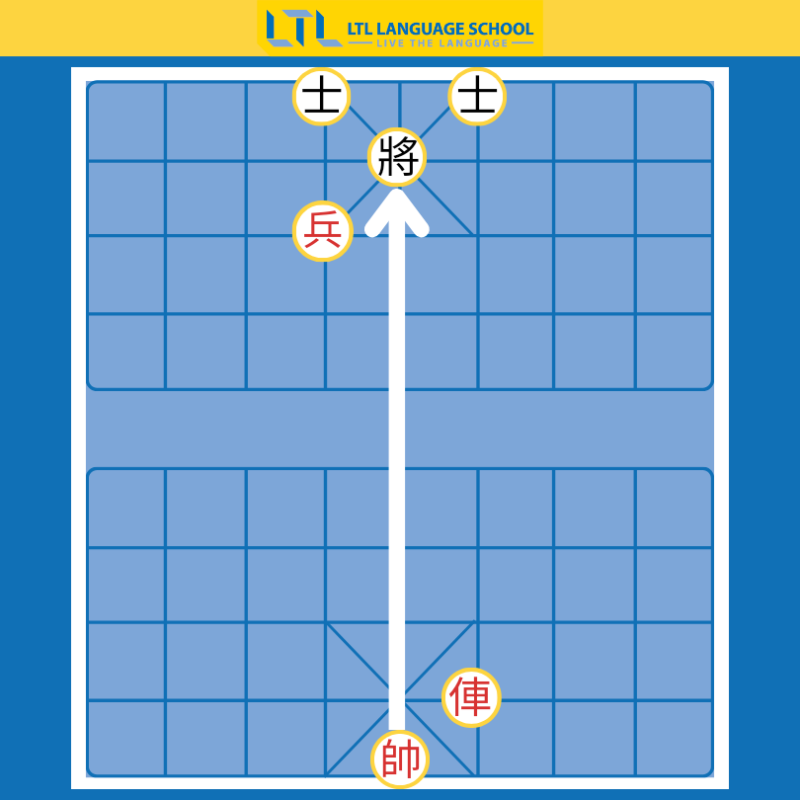
In Chinese chess, General Shuai and General Jiang should never be allowed to directly face each other.
Why? Well, because if that situation were to occur, the player next to move is allowed to execute The Flying General a.k.a. The Greatest Rule Ever.
This means the general is allowed to ‘fly’ across the board and capture his opponent, creating immediate checkmate (there’s no blocking this move!)
Make sure to stay vigilant for this situation.
As several members of the LTL team will tell you, there’s no loss more painful than one inflicted by a flying general.
Chinese Chess || Bonus Resources
So, you’ve had your first taste of Chinese chess and now you’re hooked. Not surprising, we’ve seen many of our students become very addicted very quickly!
In order to perfect your skills and knowledge, it certainly helps to read around the topic. Here’s some of our top recommendations.
To learn about the historical, cultural and politcal context that surrounds both Chinese and Western chess, check out this insightful article by Li Ma.
To improve your opening, endgame and everything in between, we’d strongly recommend Xiangqi.com for all things strategy related!
If you’d like to put your skills to the test and start playing right away, Xiangqi.com also has an online gaming arena, so you can battle to your hearts content!
And there you have it! You’re well on your way to becoming a Xiangqi Master. If you have any other Chinese chess tips, insights or experience to share, please leave a comment below.
Chinese Chess || FAQs
What is Chinese chess, and how is it different from Western chess?
Chinese chess, also known as Xiangqi (象棋), is a strategic board game that shares similar origins to Western chess.
It differs from Western chess in terms of board layout, pieces, movement rules, and strategy.
How do you say chess in Chinese?
In Mandarin Chinese, Chinese chess is 象棋 xiàng qí.
Western chess is 国际象棋 guó jì xiàng qí, which translates as ‘international chess’.
Is there a queen in Chinese chess?
No, there is no queen in Chinese chess, nor is there a piece that can be considered equivalent.
What is the objective of Chinese chess? How do you win the game?
The objective of Chinese chess is to checkmate the opponent’s General while protecting your own General.
Checkmate occurs when the opponent’s General is trapped with no legal moves to escape capture.
What are the different pieces in Chinese chess, and how do they move?
The pieces in Chinese chess include the General, Advisors, Elephants, Chariots, Horses, Cannons, and Soldiers.
Each piece has specific movement rules, such as the General moving within the palace and the Chariots having unrestricted straight-line movement.
Can you explain the concept of the “river” and “palace” in Chinese chess?
The “river” is a horizontal line on the board that separates the two territories.
Some pieces have restricted movement across the river.
The “palace” refers to the two diagonal areas on each player’s side where the Generals and Advisors reside.
Want more from LTL?
If you wish to hear more from LTL Mandarin School why not join our mailing list.
We give plenty of handy information on learning Chinese, useful apps to learn the language and everything going on at our LTL schools!
Sign up below and become part of our ever growing community!


 Hi, my name is Ilaria. I am from Italy and I am a Student Advisor at LTL. Fancy coming to study with us in China? Drop me a message.
Hi, my name is Ilaria. I am from Italy and I am a Student Advisor at LTL. Fancy coming to study with us in China? Drop me a message. Hi, my name is Mojca. I am from Slovenia in Europe and I work as a student advisor at our Shanghai school.
Hi, my name is Mojca. I am from Slovenia in Europe and I work as a student advisor at our Shanghai school.